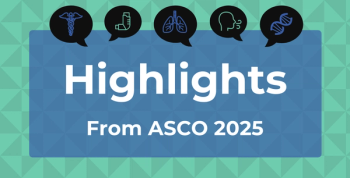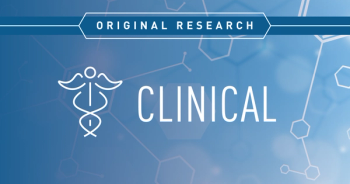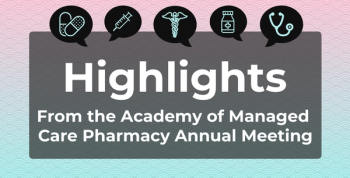
Analysis Shows Oral Semaglutide Beats Empagliflozin for Reducing Blood Sugar, Offers More Weight Loss Than Liraglutide
Oral semaglutide would be the first non-injectable agent in the GLP-1 receptor agonist class; these drugs produce powerful glycemic control along with weight loss.
An analysis of phase 3 trial data for the investigational type 2 diabetes (T2D) drug oral semaglutide shows the glucagon-like peptide 1 (GLP-1) receptor agonist does a better job reducing blood sugar than empagliflozin, a leading sodium glucose co-transporter 2 (SGLT2) inhibitor and the first T2D drug shown to offer cardiovascular benefits.
Other phase 3 results presented Saturday at the 79th Scientific Sessions of the American Diabetes Association (ADA) in San Francisco, California, show that oral semaglutide would produce more weight loss than liraglutide, the daily injectable GLP-1 receptor agonist sold as Victoza. Novo Nordisk makes both products.
In March, Novo Nordisk filed a
In
Results for PIONEER 2 show:
- Oral semaglutide produced statistically significant reductions in glycated hemoglobin (A1C) compared with empagliflozin, which is sold by Eli Lilly and Boehringer Ingelheim as Jardiance. Results at 26 weeks showed that oral semaglutide produced an A1C reduction of 1.4% compared with 0.9% for empagliflozin; the results were sustained at 52 weeks, with A1C reductions of 1.3% vs 0.8%, respectively.
- More patients taking oral semaglutide achieved an A1C <7.0% than with empagliflozin.
- PIONEER 2 also showed that oral semaglutide demonstrated weight loss of 4.2 kg compared with 3.8 kg for empagliflozin at 26 weeks. A statistically significant difference in weight loss was seen at 52 weeks: 4.7 kg for oral semaglutide vs 3.8 kg for empagliflozin.
Results for PIONEER 4 show:
- Oral semaglutide produced statistically significant reductions in A1C compared with both liraglutide and placebo, at both 26 and 52 weeks. A1C reductions at 26 weeks were 1.3% for oral semaglutide, 1.1% for liraglutide and 0.1% for; at 52 weeks, A1C reductions were 1.2% for oral semaglutide and 0.9% for liraglutide, while placebo showed a 0.2% increase in A1C.
- Oral semaglutide demonstrated statistically significant weight loss compared with both liraglutide and placebo, at both 26 and 52 weeks. Weight loss at 26 weeks was 4.7 kg for oral semaglutide, 3.2 kg for liraglutide and 0.7 kg for placebo; at 52 weeks, reductions were 5.0 kg for oral semaglutide, 3.1 kg for liraglutide and 1.2 kg for placebo at 52 weeks.
Offering a pill with the same benefits of the GLP-1 class without the injection has the potential to bring the therapy to new groups of patients, who either refuse to try injectable drugs or see a physician reluctant to prescribe them, said Todd Hobbs, MD, vice president and chief medical officer for Novo Nordisk N.A., who discussed the findings with The American Journal of Managed Care®.
“Primary care physicians have not or are not prescribing GLP-1 [receptor agonists] with regard to newer ADA guidelines,” Hobbs said, and patient reluctance to use injectable drugs “is certainly one factor.”
For physicians, it’s more complicated. With once-weekly GLP-1 agents, some patients who fear needles come to the doctor’s office for the injection, and not all primary care practices can accommodate this. When asked if some patients perceive an injectable drug as a sign their disease has progressed, Hobbs said this is a factor in some cases—and a barrier that oral semaglutide can help patients overcome.
Although GLP-1 agents do produce nausea early on, these effects level off, Hobbs said. There have been no signs of fractures, genital infections, or amputations that have been reported with SGLT2 inhibitors, he said. Thus, the PIONEER 2 results that show the opportunity for better glycemic control than empagliflozin are very important.
If FDA approves oral semaglutide, Novo Nordisk expects that patients who are using injectable GLP-1 drugs with success will stick them, and the pill will become an option for new groups of patients—especially those who have T2D and obesity. At the American College of Cardiology Scientific Session in March, a
“We know that we know only about 7% to 9% of patients are using GLP-1 agents,” Hobbs said. “We hope that oral semaglutide is going to allow patients to break some of those barriers.”
References
1. Montanya E, Rosenstock J, Canani LH, et al. Oral semaglutide vs empagliflozin added-on to metformin monotherapy in uncontrolled type 2 diabetes: PIONEER 2. Presented at: American Diabetes Association 79th Scientific Sessions, San Francisco, CA; June 7-11, 2019. Abstract number 54-OR.
2. Pratley RE, Amod A, Hoff ST, et al. Oral semaglutide vs liraglutide and placebo in T2D: PIONEER 4. American Diabetes Association 79th Scientific Sessions, San Francisco, CA; June 7-11, 2019. Abstract number 55-OR.
Newsletter
Stay ahead of policy, cost, and value—subscribe to AJMC for expert insights at the intersection of clinical care and health economics.







































